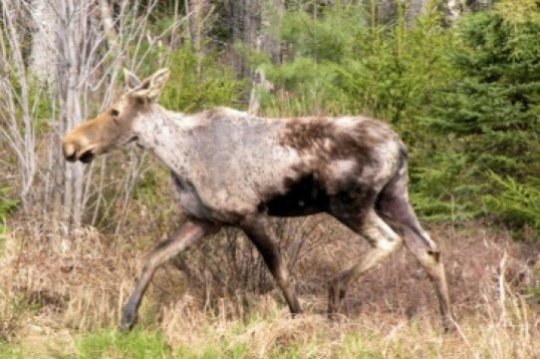[ad_1]
As winter in New England seems to get warmer, fall lingers longer and spring comes into bloom earlier, areas like northern New Hampshire and western Maine are seeing an unusual continued increase in winter ticks which are endangering the moose population. Researchers at the University of New Hampshire have found that the swell of infestations of this parasite, which attaches itself to moose during the fall and feeds throughout the winter, is the primary cause of an unprecedented 70 percent death rate of calves over a three-year period.
“The iconic moose is rapidly becoming the new poster child for climate change in parts of the Northeast,” said Pete Pekins, professor of wildlife ecology. “Normally anything over a 50 percent death rate would concern us, but at 70 percent, we are looking at a real problem in the moose population.”
In the study, published in the Canadian Journal of Zoology, researchers outline the screening of 179 radio-marked moose calves (age nine to 10 months) for physical condition and parasites in the month of January over three consecutive years from 2014 to 2016. They tracked new calves for four months each winter and found that a total of 125 calves died over the three-year period. A high infestation of winter ticks was found on each calf (an average of 47,371 per moose) causing emaciation and severe metabolic imbalance from blood loss, which was the primary cause of death.
Most adult moose survived but were still severely compromised. They were thin and anemic from losing so much blood. The ticks appear to be harming reproductive health so there is also less breeding.
The researchers say winter tick epidemics typically last one to two years. But, five of the last 10 years has shown a rare frequency of tick infestations which reflects the influence of climate change. They point out that right now these issues are mostly appearing in southern moose populations, but as climate change progresses they anticipate this issue to reach farther north.
“We’re sitting on a powder keg,” said Pekins. “The changing environmental conditions associated with climate change are increasing and are favorable for winter ticks, specifically later-starting winters that lengthen the autumnal questing period for ticks.”
Fall is considered “questing” season for winter ticks. They climb up vegetation and look to attach to a host. Once they attach, they go through three active life stages (larvae, nymph, and adult) by taking a blood meal and feeding on the same animal. The ticks will feed and remain on one host during their subsequent molts until spring when adult females detach and drop to the ground. Their preferred hosts are moose and other mammals, including deer, elk, caribou, and occasionally horses and cattle. Winter ticks rarely bite and feed on humans.
Story Source:
Materials provided by University of New Hampshire. Note: Content may be edited for style and length.
[ad_2]















